The 2013 MacBook Air Review (13-inch)
by Anand Lal Shimpi on June 24, 2013 12:01 AM ESTMore GPU Performance Numbers
The next set of benchmarks are taken from our 2013 Laptop Bench. Here we're comparing to HD 4000 and HD 4400, both using Acer S7s. Compared to HD 4400 the HD 5000 in Apple's 2013 MBA ends up being around 15% faster in most tests. Compared to Ivy Bridge/HD 4000 the gap ranges from lower single digits in thermally constrained environments to 25% or 40% in the best case scenarios.
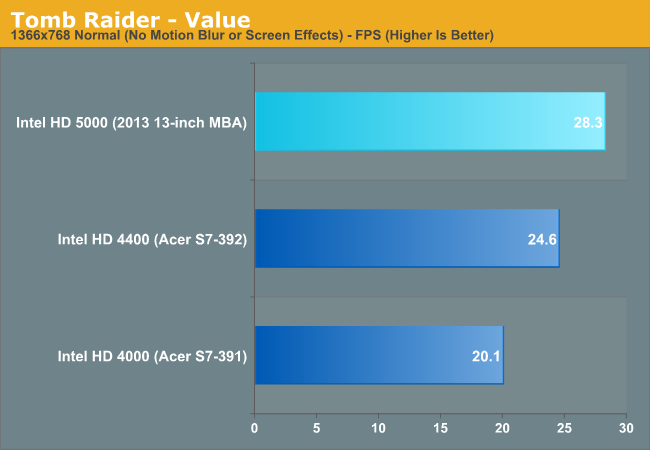

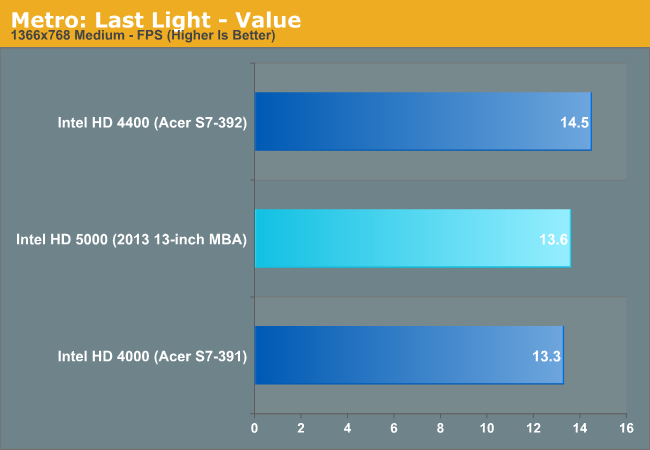
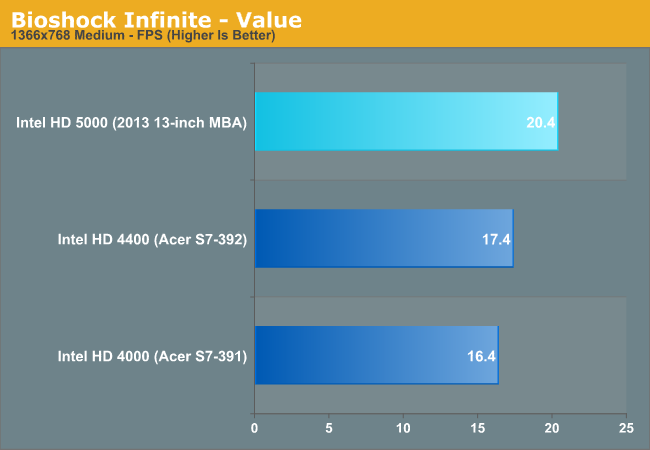
3DMark GPU Performance
We close out our look at Intel's HD 5000 performance using a historical collection of 3DMark data. The comparison gives us some more data points to characterize Intel's HD 5000. The data here is all best case scenario for HD 5000 as there are no situations where we hit thermal limits.
On average, Intel's HD 4400 ends up being 18% faster than HD 4000, while Intel's HD 5000 is 31% faster.
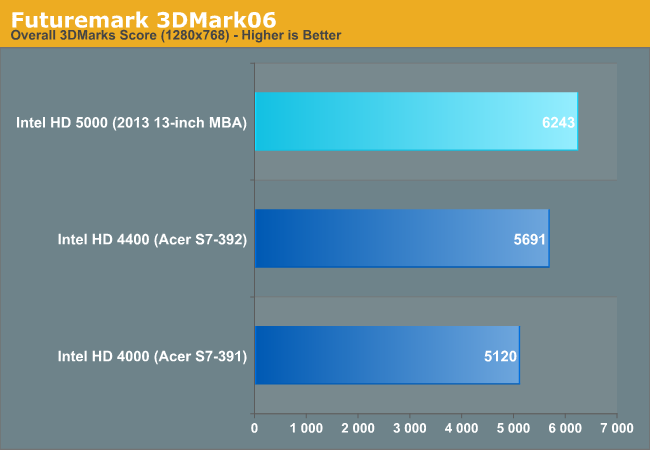
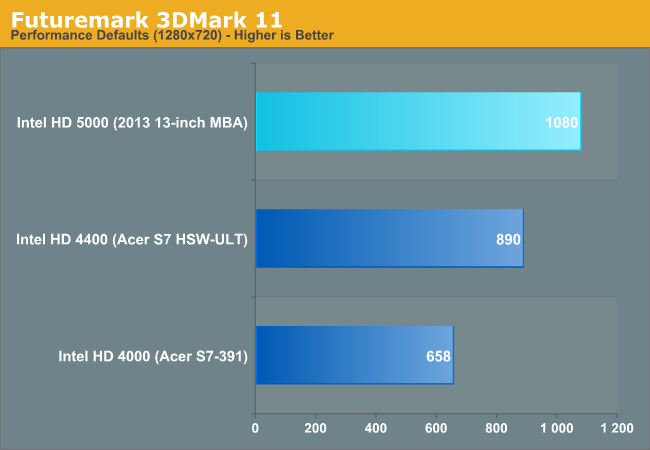
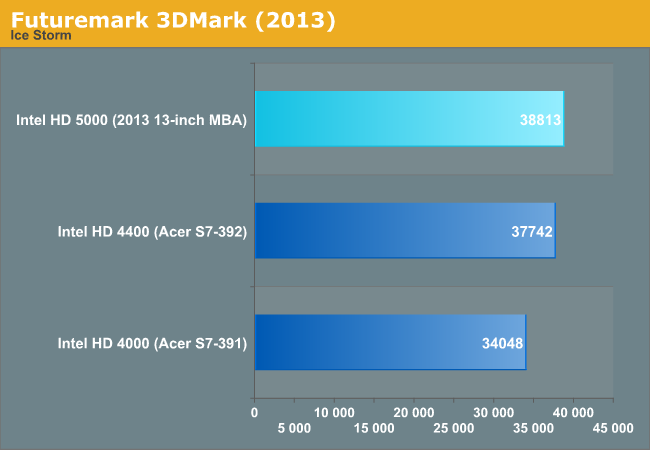
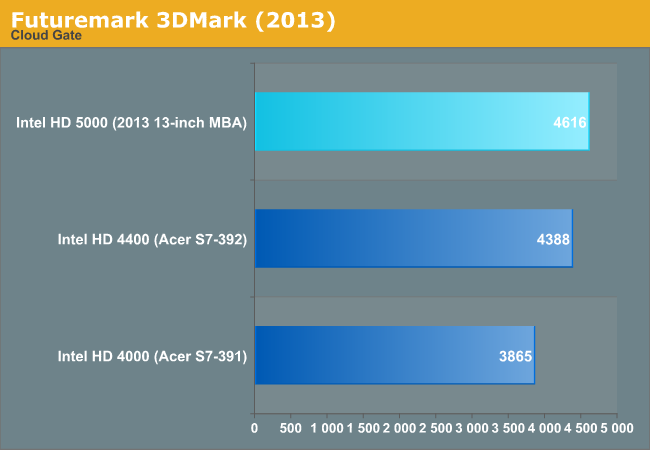
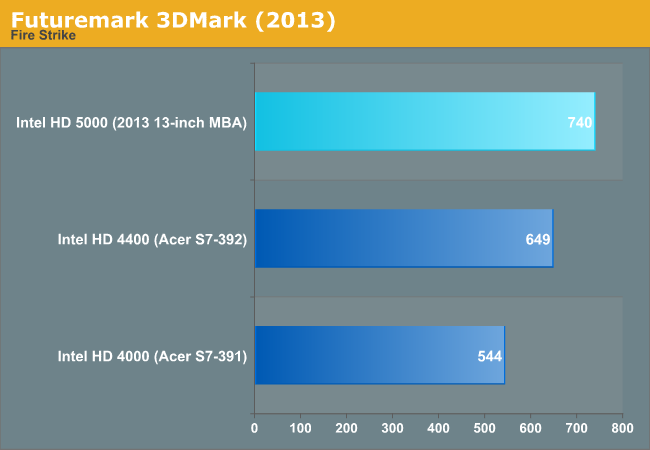










233 Comments
View All Comments
p1esk - Monday, June 24, 2013 - link
At longer length or if there are electrical interferences, Cat6 will be better for 1Gbps than Cat5e.spronkey - Monday, June 24, 2013 - link
Technically Cat5e doesn't have to reach 1Gbps at 100m lengths, which is the 1Gbps standard. So, Cat6 is the 1Gbps standard :PA5 - Monday, June 24, 2013 - link
Though you'd have to buy some seriously cheap Cat5e to get something that doesn't hit that spec. But yeah, if you're going in-wall you may as well go Cat6 for when you want a 10G network.Mikad - Monday, June 24, 2013 - link
Thanks for the review.If it's at some point updated with i7 battery life results, it would be great if you could run the battery tests in Windows + Bootcamp also. Some sites have done this, like Pcper, and there has been about 50% decrease in battery life. It would be great to have some kind of an analysis why the battery life takes such a hit in Windows.
IntelUser2000 - Monday, June 24, 2013 - link
Because the battery life gains due to Haswell are based on how well the components are cooperating together, and sub-optimal drivers would easily cancel the improvements out.That's why you see Haswell Windows Ultrabooks do pretty good, but Macbook Air running Windows isn't doing so well.
Glindon - Monday, June 24, 2013 - link
I don't think it really has much to do with drivers. There's nothing special about the components compared to a Windows ultra book. I think it boils down to something at the EFI level and Apple isn't going to prioritize it for a small subset of users. I'm guessing that running Windows in a VM (through Parallels) might give better battery life.darwinosx - Monday, June 24, 2013 - link
Yes there is. Which you would know if you read the articleApple uses custom sad, motherboard, chipsets and a few other compoenents. Thats why the sad is so much faster for example.
erple2 - Monday, June 24, 2013 - link
That, BTW, was one of the greatest autocorrects I've seen in a while. Full of fast sad indeed.Bkord123 - Tuesday, June 25, 2013 - link
hahaha!!!Mikad - Monday, June 24, 2013 - link
I've seen the drivers mentioned as the reason before, but as Glindon stated, the components are just the standard PC stuff, found in other ultrabooks. The drivers are probably the same too.